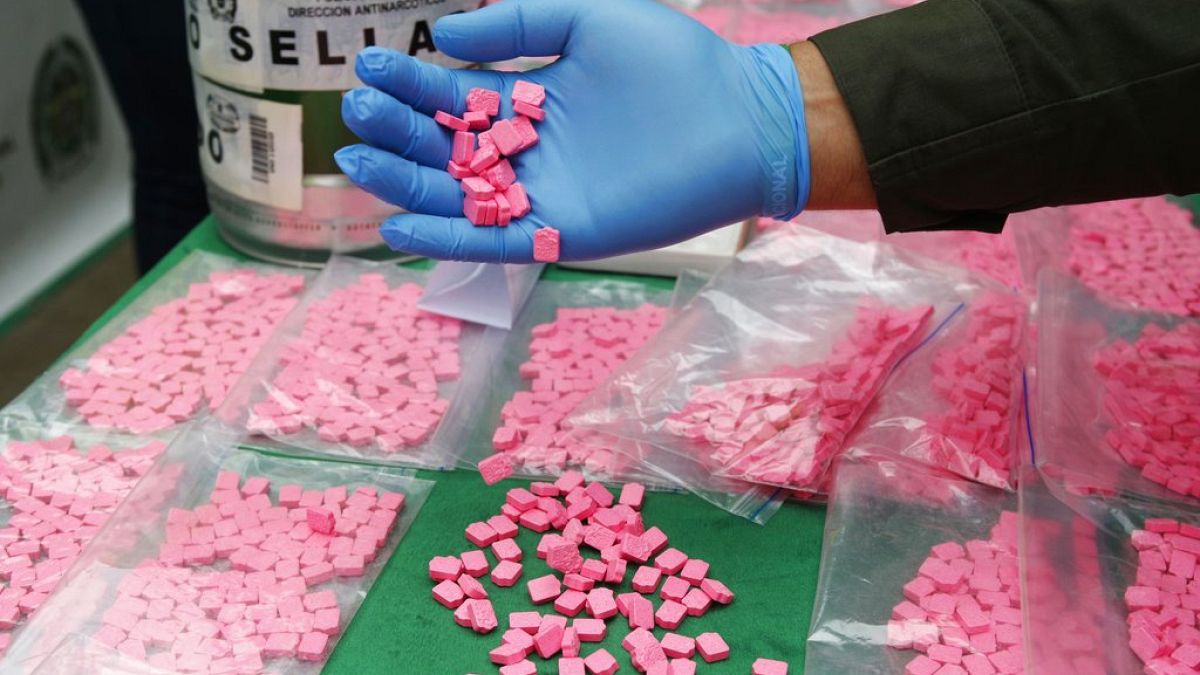European drug agency warns of concerning patterns in the consumption of drugs across the bloc, with increasing public health consequences.
The situation regarding drugs in Europe is best described with the words “everywhere, everything, everyone”, a drug monitoring agency has warned in a report flagging the increasing availability of narcotics and increasingly complex commercialisation patterns.
The impact of the use of illicit drugs is now seen almost everywhere in society, and “we have never had so many drugs available or produced on the territory of the EU”, Alexis Goosdeel, the director of the European Monitoring Centre for Drugs and Drug Addiction (EMCDDA) said while presenting the report.
The report stated that 22 million people used cannabis, 4 million consumed cocaine, and almost 3 million took MDMA in the last year in the EU.
The 2024 report showed that 85.4 million people reported having used cannabis at some point in their lives, while in the 2022 report, that number was 78.6 million. The number of at least one-time users of cocaine jumped from 14.4 million in 2022 to 15.4 million, and the figure for MDMA — typically called ecstasy — leapt from 10.6 million to 12.3 million.
The drug agency said that almost all comestibles with psychoactive properties have the potential to be used and marketed as drugs, often mislabelled or in compound form. This leads to widespread consumer ignorance about the nature of the drugs consumed, greatly increasing health risks.
EMCDDA’s director warned that there are many new substances that “nobody would imagine that human beings could use”, such as veterinary medicine products.
The agency found that the EU drug market is now characterised by a broader range of substances, which are often available at high potency or purity or in new forms, mixtures or combinations. This can have serious public health implications as both the consumer and scientific knowledge remains limited.
By the end of 2023, the EMCDDA monitored over 950 new psychoactive substances, 26 of which were first reported in Europe that year.
The high availability of different substances, which are often mixed, leads to ‘polydrug use’, the use of two or more psychoactive substances simultaneously or sequentially.
While polydrug use is a common practice among drug users, knowingly or unknowingly, the combination of substances increases the risk of health issues and complicates medical remedies.
Extra risks from injection
The agency warns that people who inject drugs are often at greater risk, such as contracting blood-borne infections or dying from a drug overdose, than those who use drugs in other ways.
Injecting drugs can also increase already existing health problems or cause abscesses, septicaemia and nerve damage. While this type of use is declining in Europe, it still accounts for a disproportionate share of both the acute and chronic harms to health resulting from drug use.
People who inject drugs are at risk of contracting infections such as viral hepatitis B and C and HIV through the sharing of drug use material.
The agency recommended more provision of sterile injecting equipment and ensuring an effective and comprehensive response for people who inject drugs across the EU.
“Here the emphasis is on working non-judgementally with people who use drugs,” it said.
The drug agency highlighted that the burden on public health associated with the use of drugs can be caused by many factors, such as the properties of the substance itself but also collateral factors like individual vulnerability and the social context of the drug use.
According to EU data, 87 million adults have used illicit drugs at least once in their lifetime.

